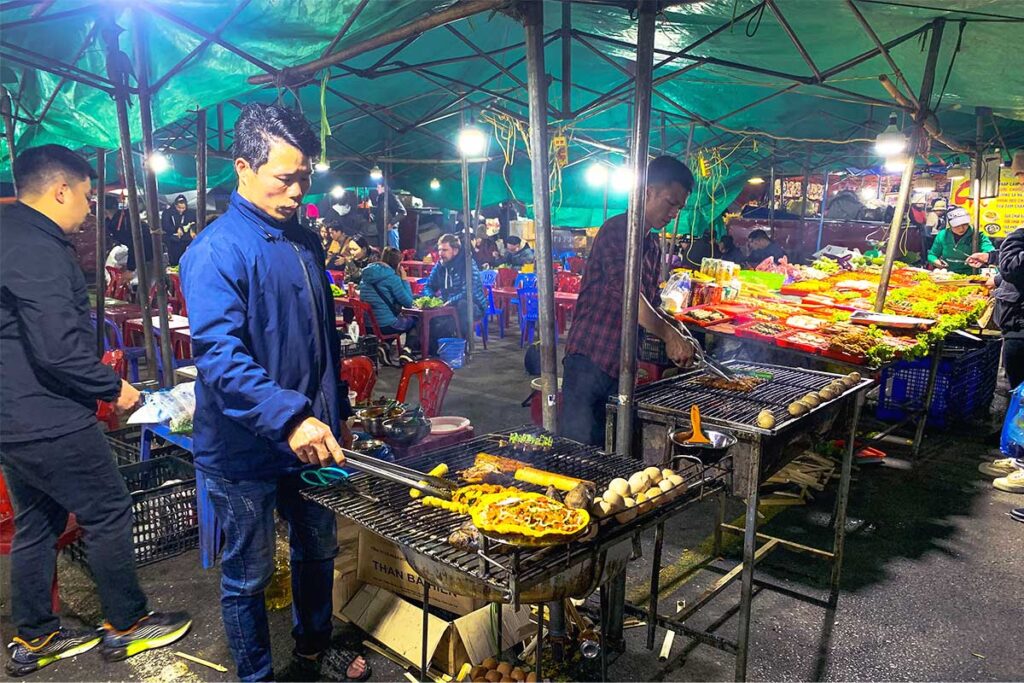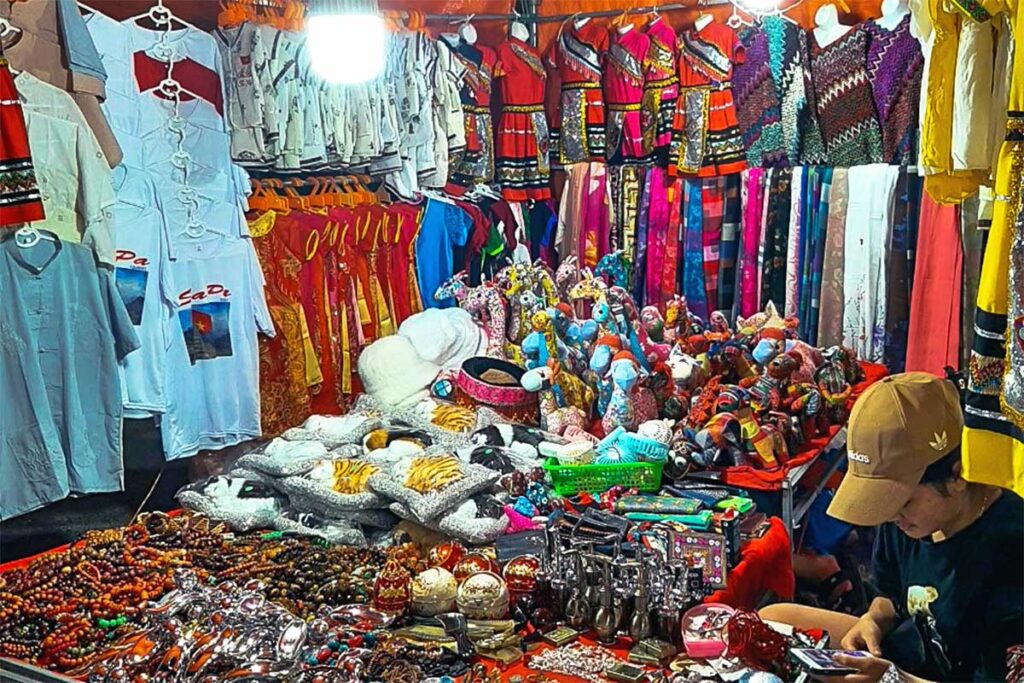Welcome to Sapa Night Market, an essential stop for anyone visiting this picturesque mountain town. Known for its vibrant atmosphere and rich cultural tapestry, Sapa Night Market is the perfect place to immerse yourself in local life. Here, you can find an array of handmade crafts, unique souvenirs, and delectable local foods. This guide will provide you with all the information you need to make the most of your visit to Sapa Night Market.
Difference between Sapa Love Market and Sapa Night Market
In Sapa, there are two prominent markets that take place in the evenings on weekends: the Sapa Night Market and the Sapa Love Market. These markets can be confusing because they both occur at night and are popular attractions. However, they offer very different experiences and cater to different interests. Here’s a clear explanation of the differences:
Sapa Night Market is primarily a commercial marketplace that comes alive in the evenings, especially on weekends. Here, you can shop for a wide range of handmade crafts, local products, and enjoy a variety of street foods. The market is a bustling hub of activity, providing a vibrant atmosphere where locals and tourists mingle.
Sapa Love Market, on the other hand, is a traditional cultural event that typically takes place on Saturday evenings in the central square of Sapa Town. Historically, it was a place where young people from the H’mong and Dao ethnic groups would gather to find potential partners through song and dance. Today, it serves more as a cultural showcase, where visitors can witness traditional performances and learn about local customs.
In summary, while the Night Market focuses on shopping and food, the Love Market provides a deeper cultural experience rooted in the traditions of the local ethnic communities.
History and background
Sapa Night Market has grown from a small local gathering to a bustling marketplace that attracts visitors from all over the world. Traditionally, local ethnic minorities, including the H’mong and Dao people, would gather to trade goods and socialize. Over time, the market has evolved into a vibrant cultural hub where you can experience the traditions and crafts of these communities. Despite its growth, the market retains its authentic charm, offering a glimpse into the rich cultural heritage of Sapa.
Location and timing
Sapa Night Market is conveniently located in the heart of Sapa town, making it easily accessible for tourists. The market typically operates on weekends, starting from the early evening and continuing late into the night. This timing allows you to explore the market at a leisurely pace after a day of sightseeing.
Location:
- Main Streets of Sapa Town: Often near the central market area: N1 Street.
Operating days and hours:
- Friday to Sunday: Approximately 6 PM to 10 PM.
Getting there
To get there, you can easily walk if you are staying in Sapa town. For those coming from further afield, taxis and motorbike taxis are readily available. The market’s central location ensures you won’t miss out on this vibrant experience.
What to expect

When you arrive at Sapa Night Market, you’ll be greeted by a lively atmosphere filled with the sounds of local music and the vibrant buzz of vendors and visitors. The market is a bustling maze of stalls, each offering something unique. You can expect to find a wide variety of items, from handmade crafts to delicious street food. The colorful displays and friendly vendors make it a delightful experience for all ages.

Shopping guide
The Sapa Night Market is a sensory overload, with a kaleidoscope of colors, sounds, and aromas. As you wander through the bustling stalls, you’ll find an array of goods, from traditional handicrafts and textiles to modern souvenirs and clothing. Be sure to bargain for the best prices, as haggling is expected and can often lead to significant savings.
Best items to buy:
- Handmade Crafts: Look for intricate embroidery, woven textiles, and traditional clothing made by local ethnic minorities. These items make for beautiful and unique souvenirs.
- Jewelry and Accessories: Many stalls sell handcrafted jewelry, including silver bracelets and earrings, which are popular among visitors.
- Souvenirs: You’ll find a range of souvenirs such as keychains, postcards, and small decorative items that capture the essence of Sapa.
- Traditional H’mong Embroidery: These pieces are not only beautiful but also support the local artisans.
- Local Herbal Medicine: Some stalls offer traditional herbal remedies, which make for an interesting and useful purchase.

Tips for bargaining:
- Start Low: Begin with a lower offer and negotiate up to a fair price.
- Be Respectful: Bargaining is a common practice, but always do so respectfully.
- Bundle Buying: If you’re buying multiple items, ask for a discount on the total price.
Food guide
One of the main draws of the market is the delicious street food. The food stalls at Sapa Night Market offer a culinary adventure. You can find a variety of local dishes that showcase the flavors of the region.
Must-try local dishes:
- Thang Co: A traditional H’mong dish made from horse meat and organs, often served with vegetables.
- Grilled Meats: Skewers of marinated pork, beef, and chicken grilled over an open flame.
- Sticky Rice: Available in different colors and flavors, this is a staple in the local diet.
- Pho: The famous Vietnamese noodle soup, often served with fresh herbs and lime.
Tips for enjoying street food:
- Eat where locals eat: Follow the locals to find the best and safest food stalls.
- Check for freshness: Look for stalls with high turnover to ensure the food is fresh.
- Bring cash: Most food stalls do not accept card payments, so make sure you have enough cash.
Tips for Visiting
What to bring
- Bring cash: While some vendors may accept card payments, it’s best to have cash on hand, especially for smaller purchases and street food.
- Dress warmly: Sapa’s evenings can get chilly, so dress in layers to stay comfortable.
Safety tips and cultural etiquette:
- Stay Aware: Keep an eye on your belongings as the market can get crowded.
- Respect Local Customs: Be polite and respectful to vendors and fellow shoppers.
- Ask Permission: Always ask before taking photos of people or their goods.
Making the most of your visit:
- Plan Ahead: Know what you’re looking for to make your shopping more efficient.
- Try New Things: Don’t be afraid to try unfamiliar foods or buy unique souvenirs.








